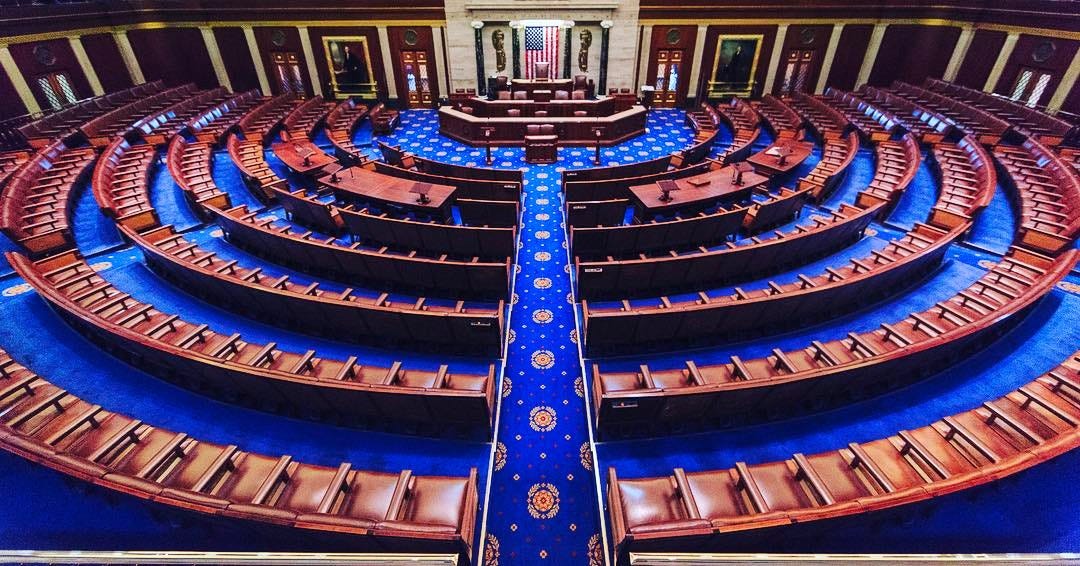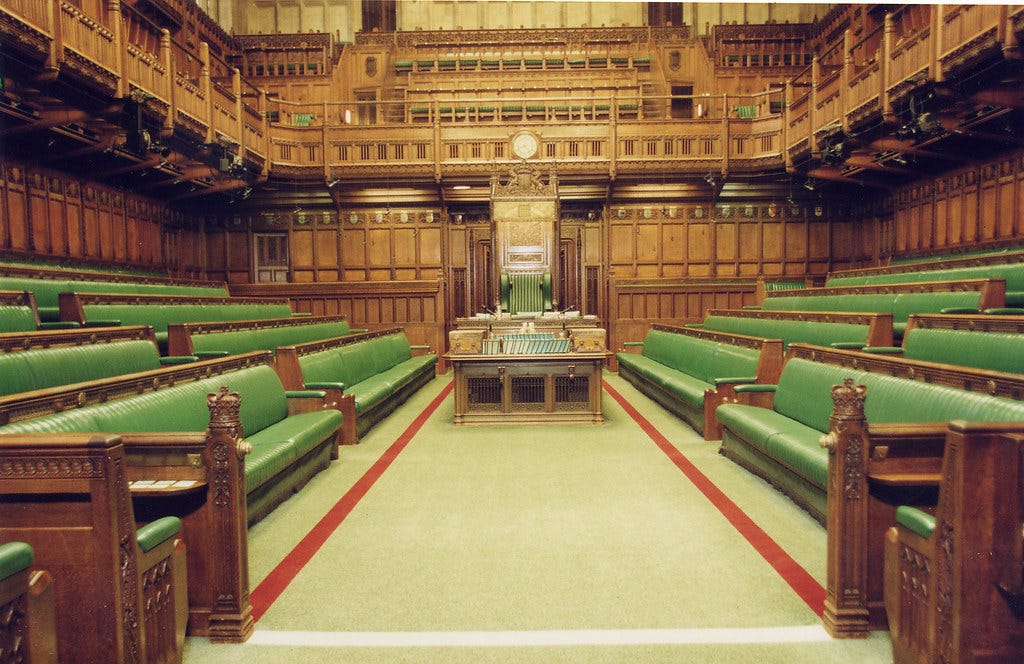Not Boring by Packy McCormick - The Interface Phase
Welcome to the 3,188 newly Not Boring people who have joined us over the last two weeks! Join 75,787 smart, curious folks by subscribing here: Today’s Not Boring is brought to you by… Sprig Sprig is a long-time sponsor (you know it as UserLeap), but the team added so much to its products that it needed a new name: Sprig. Sprig is your all-in-one product research platform. Every week, at the bottom of the newsletter, I use a Sprig microsurvey to get your feedback -- you click a button to tell me whether you loved or hated the newsletter and write a comment, and Sprig categorizes responses with machine learning so that I can get a quick pulse check. Recently, Sprig rolled out two new solutions: video interviews and concept testing. Now, companies can have async video conversations with users, and can even share Figma designs at the same time to get rich feedback on concepts and prototypes that are still in development. If you build products, you should just try it for yourself. Sprig is addictive. I check it at least once a day. I love reading what you write, even when it hurts. And teams at Opendoor, Loom, and Dropbox love UserLeap too. The Sprig team knows that once teams start using it, they don’t stop, so it’s offering a free onboarding and 30-day trial to any enterprise company (~100,000+ users). Hi friends 👋, Happy Monday! Football is back, it’s Fall in NYC, and life is good. This one is a little shorter than the average Not Boring. Spend the extra 15 minutes enjoying a nice cup of coffee, hanging with your family, or outside taking a walk. I’m excited for richer digital spaces, but at the expense of less rich digital spaces, not good ol’ fashioned IRL time. Let’s get to it. The Interface PhaseHorseshoe or rectangle? In October 1943, two years after bombs destroyed the British Parliament’s Commons Chamber in the Blitz of 1941, the House of Lords debated how to rebuild. Some MPs and Lords wanted to take the opportunity to rearrange the Chamber in a horseshoe style, like the US Senate and House of Representatives. Others argued that they should retain the “adversarial rectangular pattern” from before the bombing. British Prime Minister Winston Churchill led team rectangle. Churchill believed that the layout of the space itself was responsible for the British two-party system. The confrontational design -- with the Conservative Party on one side and the Labour Party directly across from them -- kept debates “lively and robust.” The design left no space for equivocation. You’re with us, or you’re directly against us. In his October 28, 1943 speech on the matter, Churchill delivered an all-time classic line: We shape our buildings; thereafter, they shape us. Churchill and his rectangle side won the day. To this day, Members of Parliament can only switch allegiances by physically crossing the floor in plain view. We shape our buildings; thereafter, they shape us. The spaces in which we live, work, and play shape how we live, work, and play. Churchill was referring to physical buildings, of course. The state of the art computer at the time was Colossus, which Alan Turing and team used to break Axis codes during World War II. Its interface was a series of switches and dials. Only a few people in the world needed to, or knew how to, operate it. Increasingly, though, the spaces in which we spend time are digital ones. Each new phase of the internet -- Web 1.0, Web 2.0, and Mobile -- relied on new digital spaces to attract consumers. From text-based to graphical to interactive to mobile apps, new interfaces brought new adoption. Each phase was enabled by new infrastructure beneath the surface and pushed to popularity by the apps built on top, but each also required new interfaces to achieve broad adoption. We shape our interfaces; thereafter, they shape us. While web3 apps like NFTs, DAOs, and DeFi are gaining popularity, we’re still interacting with web3 through web2 interfaces. If history is a guide, we’re going to need new web3-native interfaces and spaces to bring hundreds of millions of people into the ecosystem. It’s early, but there are clues of what new interfaces might look like. New digital spaces are springing up around the internet and evolving every day. Wallets like MetaMask, Phantom, and Rainbow are changing how we log in, and what we bring with us when we do. Web3 worlds like Decentraland, Somnium Space, The Sandbox, and Cyber are reimagining how we experience and interact online. They’re early components of the Metaverse, sure, but this isn’t necessarily a Metaverse piece. It’s a piece about the evolution of the way that we interact with, and on, the internet. We’ve spent most of 2021 over here at Not Boring HQ exploring web3, and hopefully we all understand what’s happening a little bit better because of it, but it’s still hard to feel the potential impact of web3 in our bones while we’re still using web2 interfaces. For web3 to become a part of our daily life in the way that the internet or mobile is will require new spaces and interfaces. Today, we’ll explore how those new interfaces and spaces might bring web3 mainstream:
The cheat code for studying new technologies is that they tend to follow old patterns. Let’s look back before we look forward. The Apps-Infrastructure Cycle
In 2018, Union Square Ventures’ Nick Grossman and Dani Grant wrote an essay called The Myth of the Infrastructure Phase. During 2018’s crypto winter, they kept hearing that crypto needed better infrastructure, and once that happened, then people would be able to build those killer apps. People building infrastructure, though, said that they were building the infrastructure, but that no one was building apps on top! Why the disconnect? Instead of the commonly-accepted “infrastructure phase,” Grossman and Grant argued, crypto was in another turn of the apps-infrastructure-cycle. “The history of new technologies shows that apps beget infrastructure,” they wrote, “not the other way around.” First, builders build apps, then other builders build the infrastructure to support those apps, then that infrastructure supports new apps, which in turn requires new supporting infrastructure, and so on. That’s how it worked historically, from the lightbulb to the airplane to the iPhone, and it’s exactly what was happening in web3. Grant and Grossman’s 2018 classic has re-entered the conversation recently, as an explosion of new web3 apps has caused challenges:
Last week, Paxos Global and 6th Man Ventures’ Mike Dudas tweeted that the piece was very relevant to the current crypto environment. Blockchain Capital’s Kinjal Shah tweeted, “we’re in an app frenzy, about to enter a major infrastructure phase.” The apps-infrastructure cycle is playing out in real-time. For example, Grant and Grossman mentioned ERC721 as the last piece of infrastructure built when they wrote the piece. The 2018 invention of ERC721, the non-fungible token standard (infrastructure), has powered the 2021 NFT craze (app). From February to July, $950 million worth of NFTs changed hands on OpenSea. In August and the first 12 days of September alone, $4.8 billion has passed through OpenSea. As a result of all this demand, cracks in the infrastructure are showing. Gas fees, the price someone needs to pay to Ethereum miners just to buy or mint an NFT, regularly cross into the $300+ price range during a hot drop. Already, builders are deploying new infrastructure to fix the problem. New Layer 2 scaling solutions will continue to improve speeds and lower transaction costs. Arbitrum, a new L2, launched on Ethereum Mainnet in early September and its parent, Offchain Labs, announced a $120 million round led by Lightspeed. In the past 24 hours, 14,260 ETH have been bridged from Ethereum to Arbitrum. The bridges from Ethereum to L2s, like Polygon, Arbitrum, Fantom, and Optimism, and other L1s, like Solana, Avalanche, and Near are open and flowing. Polygon is leading the charge, with $2.4 billion in Total Value Locked (TVL), a proxy for volume. But while the infrastructure will continue to improve, the bigger challenge right now is the fact that we’re interacting with web3 products via Web 2.0 interfaces. Some NFTs are already available on OpenSea via Polygon, on which transaction fees are much lower, but that requires “bridging” your ETH over to Polygon (which costs gas), waiting nervously for the deposit to go through, unlocking your Polygon ETH, then signing a message to complete the transaction. I am fairly comfortable with all of this, and it still gives me pause. (That said, 250k people have participated in at least one OpenSea Polygon transaction. Maybe I’m a luddite.) The infrastructure is getting there; the interfaces need a refresh. This isn’t a knock on OpenSea. OpenSea is killing it, and I’m a big fan. It just crossed 400k total traders all-time. It’s made it possible for a large number of early adopters to buy and trade NFTs. But it still looks and behaves like a web2 product, as most web3 products do. People upload content, other people can interact with and transact that content. The infrastructure behind OpenSea is novel, and OpenSea abstracts away a bunch of complexity, but the OpenSea interface could have been built in 2015 or even 2010. eBay has been around since 1995. It’s still so early. If web3 is going to be as big as the internet, which has 4.66 billion users, it’s only penetrated less than 1% of the market as judged by the number of people who have MetaMask wallets (which just passed 10 million). There’s still a lot of work to be done to attract a broader base of early adopters, and even “Cross the Chasm” to the early majority. We’ve discussed some of the things that will accelerate the adoption of web3 technology in the last few posts, and we’re adding another concept today:
But there’s still a missing ingredient, at least based on the last three major consumer internet paradigm shifts: new epochs need new interfaces. To learn about the history of interfaces and what web3 interfaces might look like…How did you like this week’s Not Boring? Your feedback helps me make this great. Loved | Great | Good | Meh | Bad See you on Monday! Thanks for reading! Packy If you liked this post from Not Boring by Packy McCormick, why not share it? |
Older messages
Nifty Corporates
Monday, August 30, 2021
VISA, Budweiser, Marvel, and the Positive Sum Corporate NFT Awakening
Solana Summer
Monday, August 23, 2021
The $21B Blockchain and the Arrow of Time
Story Time
Monday, August 16, 2021
The Progressive Decentralization of Narrative
Lithic's New Customer
Friday, August 13, 2021
Meet the $800M 💳 🚀 Making Issuing Cards as Easy as Accepting Payments
Status Monkeys
Monday, August 9, 2021
Analyzing NFTs as Social Networks Using the Status-as-a-Service Framework
You Might Also Like
🔮 $320B investments by Meta, Amazon, & Google!
Friday, February 14, 2025
🧠 AI is exploding already!
✍🏼 Why founders are using Playbookz
Friday, February 14, 2025
Busy founders are using Playbookz build ultra profitable personal brands
Is AI going to help or hurt your SEO?
Friday, February 14, 2025
Everyone is talking about how AI is changing SEO, but what you should be asking is how you can change your SEO game with AI. Join me and my team on Tuesday, February 18, for a live webinar where we
Our marketing playbook revealed
Friday, February 14, 2025
Today's Guide to the Marketing Jungle from Social Media Examiner... Presented by social-media-marketing-world-logo It's National Cribbage Day, Reader... Don't get skunked! In today's
Connect one-on-one with programmatic marketing leaders
Friday, February 14, 2025
Enhanced networking at Digiday events
Outsmart Your SaaS Competitors with These SEO Strategies 🚀
Friday, February 14, 2025
SEO Tip #76
Temu and Shein's Dominance Is Over [Roundup]
Friday, February 14, 2025
Hey Reader, Is the removal of the de minimis threshold a win for e-commerce sellers? With Chinese marketplaces like Shein and Temu taking advantage of this threshold, does the removal mean consumers
"Agencies are dying."
Friday, February 14, 2025
What this means for your agency and how to navigate the shift ͏ ͏ ͏ ͏ ͏ ͏ ͏ ͏ ͏ ͏ ͏ ͏ ͏ ͏ ͏ ͏ ͏ ͏ ͏ ͏ ͏ ͏ ͏ ͏ ͏ ͏ ͏ ͏ ͏ ͏ ͏ ͏ ͏ ͏ ͏ ͏ ͏ ͏ ͏ ͏ ͏ ͏ ͏ ͏ ͏ ͏
Is GEO replacing SEO?
Friday, February 14, 2025
Generative Engine Optimization (GEO) is here, and Search Engine Optimization (SEO) is under threat. But what is GEO? What does it involve? And what is in store for businesses that rely on SEO to drive
🌁#87: Why DeepResearch Should Be Your New Hire
Friday, February 14, 2025
– this new agent from OpenAI is mind blowing and – I can't believe I say that – worth $200/month










